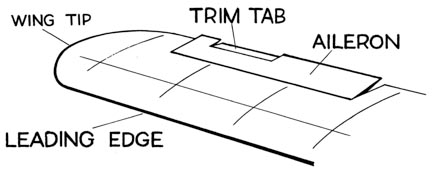Glossary of Aviation Terms | Ailerons
Ailerons | Paramount Business Jets
Ailerons are one of the control surfaces of an aircraft that allow the aircraft to roll or bank. They are hinged to the trailing, outboard edge of a wing, and are usually interconnected to increase lift on one side and decrease lift on the other. The reason they are located as far out as possible on the wings is to maximize the rolling movement. When these ailerons either go up or down, it changes the shape of the airfoil, changing the angle of deflection and ultimately creating a difference in the amount of lift that is generated on the two opposing wings.
To further explain the purpose of an aileron, the deflection of an aileron changes the effective camber or the curvature of the airfoil relative to the wing chord. As the trailing edge of a wing is deflected downward, the air velocity over the wing is increased as the air velocity under the wing is decreased. This means that under Bernoulli's Law, more lift is created. Conversely, an aileron that is deflected upward will result in slower airflow over the wing and faster airflow under the wing, creating negative lift.
The ailerons are controlled by the pilot through rods or cables that connect the opposing ailerons to each other and to the control device in the cockpit. Guiding the control device to the right will move the right aileron up, decreasing lift, and the left aileron down, increasing lift. The right wing's decrease in lift and the left wing's increase in lift cause a roll and bank to the right. The same procedure and concept apply when the control device is guided to the left, but with the opposite reaction.
To execute a smooth, coordinated turn in which the fuselage is in line with the flight path, the pilot uses the aircraft’s rudder in conjunction with the ailerons. This is done to compensate for the adverse yaw that results from the use of ailerons. Further, to prevent the aircraft from continuing to roll, the pilot must use opposite ailerons in order to maintain the angle of a bank that is desired. This is necessary because the wing on the outside of the turn develops more lift than the other due to the difference in the speed of air that is traveling across the flight surfaces. A well-balanced, coordinated use of the ailerons, along with the rudders, will be indicated by the "ball" on the inclinometer.

Explore More Aviation Terminology
- Radar | Paramount Business Jets
- Lift | Paramount Business Jets
- Clearance | Paramount Business Jets
- Airport | Paramount Business Jets
- Drag | Paramount Business Jets
- Medevac | Paramount Business Jets
- Visual Meteorological Conditions | Paramount Business Jets
- Cruising Altitude | Paramount Business Jets
- Aircraft | Paramount Business Jets

